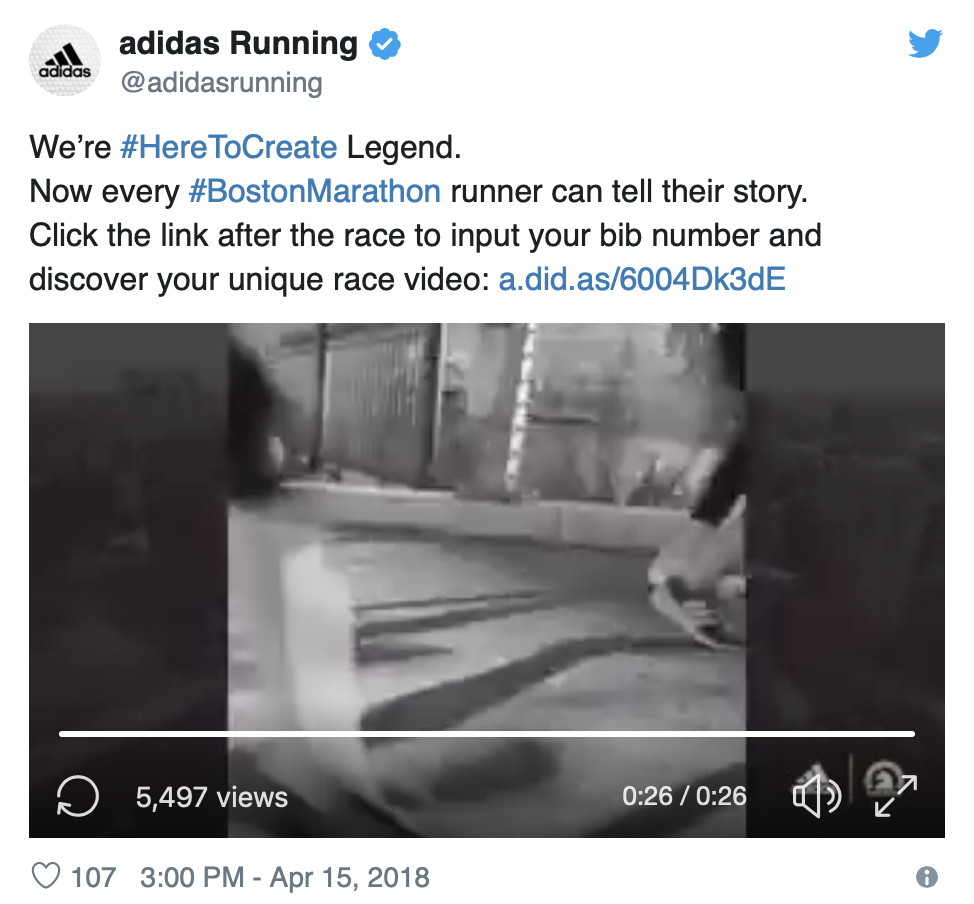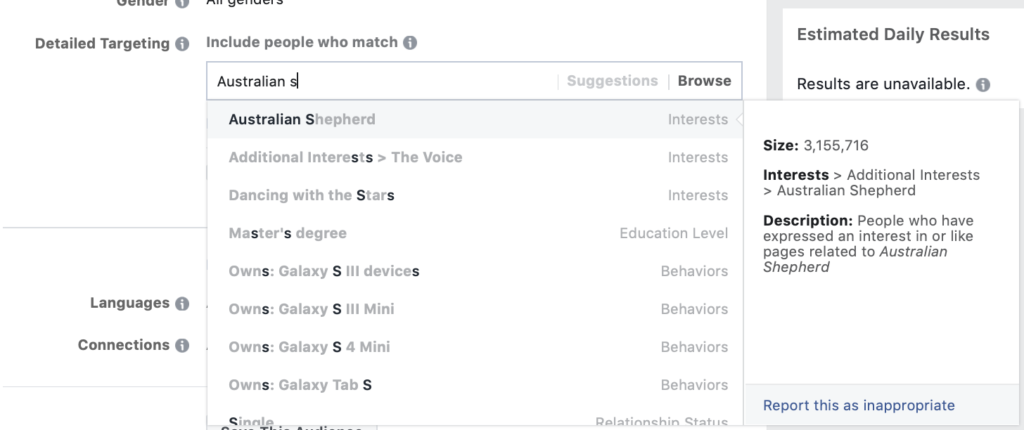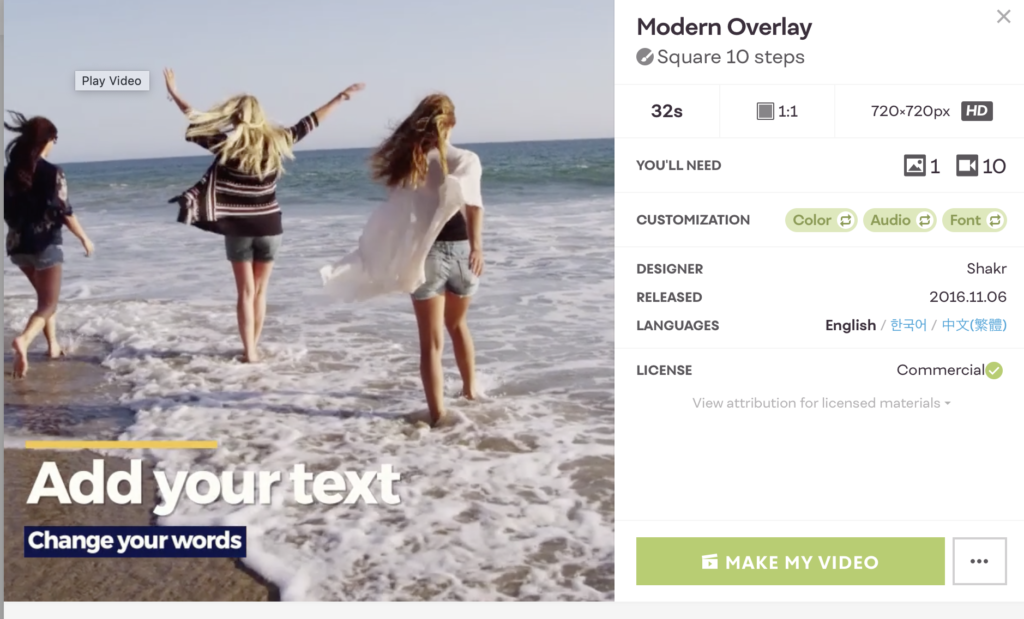Gone are the days when brands can rely on a single video and hope it will appeal to their entire audience, using generic content for mass appeal. Now, with users regularly seeing custom-for-them videos regularly on Facebook sharing birthday messages, their top fans, and their best memories from a year, consumers are expecting more personalization.
Considering the sheer amount of video content flooding the feeds, personalization is the way to make sure that your ads stand out and are memorable with your audience. They can also increase social shares, getting you more visibility, and help you make a bigger impact that can lead to more sales and improved customer loyalty.
What Does Personalization-At-Scale Look Like?
Personalization, of course, can be a little tricky. There’s a lot of work involved, and there are different levels of personalization. In this post, we’re going to take a look at how you can create high-converting Facebook video (organic and ads!) that are personalized in the best way.
Personalization at a base level can just mean creating ad campaigns that are tailor-made to very specific niches within your audience so that your video ads resonate with them.
If selling a Roomba, for example, you could have one ad created for busy moms tired of cleaning up cheerio crumbs, one for pet owners who have hair everywhere, and one for dads who are overall the glitter. Each video will resonate more will each individual audience, increasing the likelihood of a conversion.
You can go further, though, and offer true personalization. Think about those videos that Facebook creates every so often, sharing just-for-you videos, showing you how many birthday messages you got and your profile picture with a birthday hat. These are obviously difficult to do at scale… but not impossible.
Let’s take a look at 2 case studies and what this looks like.
Share a Coke
One option is to opt for what I call pseudo-personalization, where you’re getting creative and appealing to more people but don’t need to create an actual individual video for each person. Coke’s “Share a Coke” campaign did this, featuring commercials and actual products with different names on the bottles.
They promoted their product as a community-builder, but people saw their own names (or the names of someone they cared about) and wanted to go find them in store. Personalized = high converting, even though coke was only doing something that magnets and keychains at tourist traps had been doing for years. It helps people see themselves in a way that relates to your business, and it didn’t require true video personalization.
Adidas Boston Marathon Campaign
Adidas got about as personalized as you can possibly get with their video campaign. To celebrate the 30th year of their partnership with the Boston Athletic Association and get people excited about the release of hte Adizero Boston 7 2019 running edition shoe, they created a spectacular campaign at a massive scale.
They wanted to create a video for every single person who ran the marathon, showcasing them as legends for their participation in the race itself. Their digital agency Grow actually developed a technology that would use radio frequency identification chips that were built into a runner’s race bibs, which then send data to specialized cameras that would capture footage of each runner and identify them. They had more than 18 videographers there on the day of the race to get shots of them throughout the marathon and crossing the finish line.
Twenty-four hours later– and thanks to a custom algorithm to help speed up the process– Adidas sent a video to every single runner, along with a link that sent people to the site containing all the videos. Adidas shared some of the videos on their account, and plenty of the runners did, too.

This is as personalized as you can possibly get– actual video footage of someone doing something incredible in a way that ties in with your brand and then presenting it to them. This is scalable, but the technology and costs involved aren’t necessarily realistic for most brands. Finding a sweet spot between the roomba example and the share-a-coke and the Adidas campaign is the way to go, wherever that may be for you and your brand.
How to Create High-Converting Personalized Facebook Video Ads
Creating high-converting Facebook ad video campaign based in personalization can be overwhelming. It’s a big, involved process, and you want to make sure you get it right. Let’s go step by step through the process of creating one of these campaigns so you can jumpstart your own.
1. Take an Audience Interest & Make It Scalable
Before you start trying to find quick ways to personalize an ad, it’s important to understand what types of content your audience will want to see on a Facebook video (organic or otherwise).
Someone running a petstore, for example, might consider that people want to see videos that remind them of their own pets. You can show dog owners clips of dogs, and cat owners videos of cats.
You can even get specific, opting for content that’s breed specific. If we’re selling pet food to dog owners, see how this idea could become scalable and personalized:
- “We know your Aussie loves to run, so give them the food that will keep them going.”
- “Your pug loves nothing more than snuggling up next to you. Make sure they’ve got plenty of years to do so with the right food.”
- “Your Great Dane has a big heart– literally and figuratively. Take care of it with high-quality, good-for-them food.”
- “Your labrador will eat anything you put in front of them, but that doesn’t mean they should! Give them the best quality of food for a long, healthy life.”
A strategy like this is personalized and scalable, but it’s not getting to that creepy, I’m-watching-you level that customers may not want to see. Someone may be put off, for example, if they randomly saw a pet store with videos of their own pets.
2. Consider How You’ll Target These Users
When it comes to personalized videos, it’s important to understand how you’ll be showing the right content to the right people. In our example above, it wouldn’t exactly make a ton of sense to be showing a boxer owner the video of a Bernese mountain dog.
Adidas emailed their personalized content to users. This was a good option because it was so personalized.
Something more generic, like our dog food example, however, can be a little easier to target. You can target by interest, or retarget based on certain actions your audience has taken.

If they’ve checked out a page for breed information and recommendations, that’s a good one to choose. You can also use your database of information if you have any; you could ask new customers, for example, what breed of dog they have and then use custom audiences to reach segmented audiences.
3. Use Flexible Video Templates to Offer Personalization at Scale
After you’ve decided what you want to create and how to get in touch with your target audience, you’ll gather the raw video clips and images as needed. This can include free-for-commercial use stock photos if needed.
Then it’s time to actually assemble the videos themselves, and the trick here is to use flexible video templates that allow you to swap out images, video clips, and/or text as necessary. This allows you to create a general video for the purpose and then swap out a video of the labrador instead of the boxer and the text to match. It’s quicker than creating entire videos, and still gives your content that polished look that comes with background music, seamless integration, and special effects.

Shakr has flexible, high-converting tool that can help you do just this. Simply find a template that matches what you need, create the general campaign, and then swap out whatever you need to on each new version. This speeds up the process, allowing you to offer personalization at scale. You can see how it works here.
Conclusion
Social media users have higher expectations for video content. They want engaging, personalized, and even interactive content that feels tailor-made just for them. Fortunately for all marketers, there are a few ways you can offer personalized content that suit hyper-specific niches of customers without having to actually Facebook stalk and create videos for each individual one (unless you want to, ala Adidas).
Ultimately, having a solid strategy from the get-go and the right tools in place will make a world of difference.
Want to streamline your video creation to allow for scalable personalization? Learn more about Shakr here.
The post How You Create High Converting Facebook Personalized Video Ads appeared first on Shakr Video Marketing Blog.
* This article was originally published here

